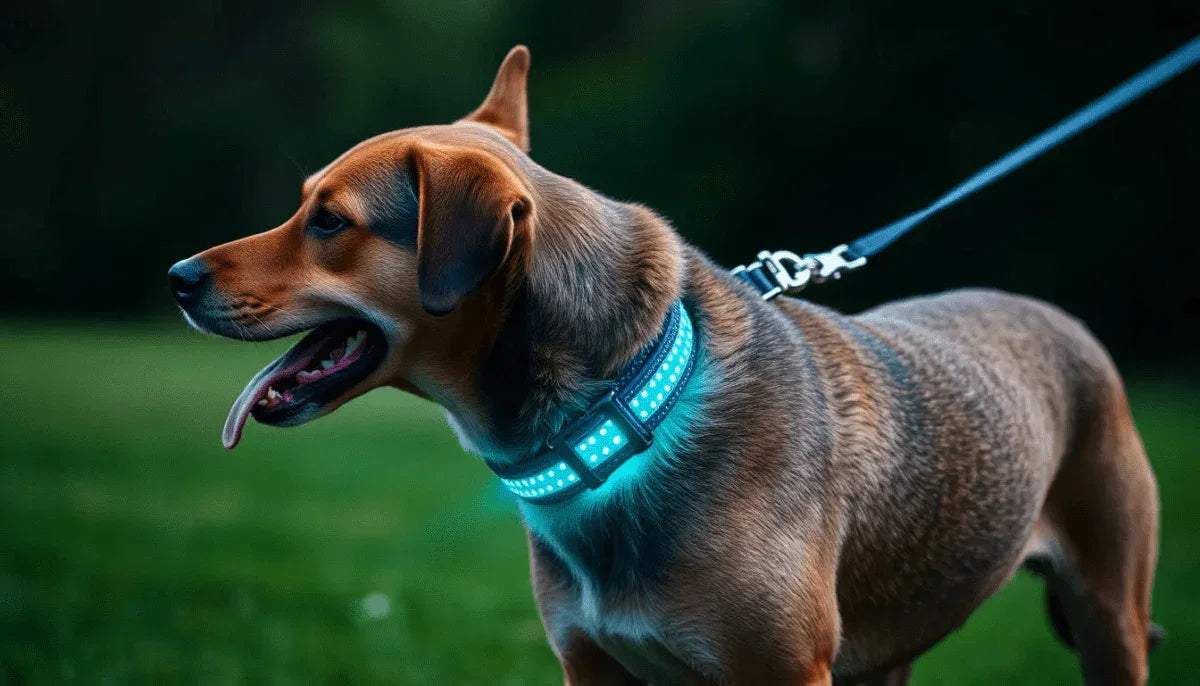Leash and collar buying guide: fit, material, and safety
Introduction
Choosing the right dog collar matters more than you might think. The wrong fit causes escapes, chafing, and stress. The right collar keeps walks safe and training effective. At Talis-US, we carry quality options that balance comfort and control. This guide covers fit, material, safety, and smart buying tips for every dog.
Why the right dog collar matters
Safety and control are the top priorities. A secure dog collar helps prevent escapes and reduces leash pulling. It also gives you better control in busy or dangerous situations.
Comfort matters for daily wear. A poor fit causes chafing, hair loss, and pressure points. Dogs who wear a comfortable collar are calmer and less likely to resist handling.
Collar choice affects training. The wrong tool can confuse your dog. Training dog collars, used correctly, can speed learning. Use them with clear cues and professional guidance when needed.
How to get the right fit
Measure your dog's neck
You need a flexible tape measure or string and a ruler. Measure where the collar will sit, usually just below the ears and above the shoulder blades. Record the measurement and add an inch for small dogs and two for larger breeds.
Common mistakes include measuring too tight, measuring hair instead of skin, and picking a collar size without checking the hardware. Always double-check measurements before buying.
Fit check: two-finger rule and movement test
After fitting, use the two-finger rule. You should slip two fingers flat between collar and neck. If you can slide more than two, it is too loose. If you cannot fit two fingers, it is too tight.
Test movement by letting your dog move and play. The collar should stay in place but never press into the windpipe. Check fit for thick-coated breeds and long-necked dogs, and adjust accordingly.
Puppy and growing dogs
Puppies need frequent resizing as they grow. Check fit every few weeks until growth slows. Adjustable dog collars are ideal during growth phases because they expand with your puppy.
Pick adjustable collars with sturdy buckles that lock securely. Replace the collar if you see wear, even if it still fits.
Material guide: pros and cons
Leather dog collars
Leather dog collars offer durability and a classic look. They soften with time and often become more comfortable. Quality leather lasts years when cared for.
Care tips include wiping off dirt, using leather cleaner, and applying conditioner every few months. Avoid prolonged water exposure to prevent drying and cracking.
Nylon, Biothane, and synthetic options
Nylon and synthetic collars are lightweight and come in many colors. They dry quickly and resist stains. Biothane combines strength with easy cleaning, making it ideal for water play.
Choose nylon for bright color and budget. Pick Biothane for rugged outdoor use and low maintenance.
Metal hardware and D-rings
Collars use different buckles and clips. Quick-release buckles let you remove collars fast. Snap and welded D-rings provide different levels of security.
Look for rust-resistant metal and solid welds. For strong pullers, choose heavy-duty buckles and reinforced stitching.
Collar types and when to use them
Adjustable dog collars
Adjustable dog collars fit a range of neck sizes. They are great for growing dogs and multi-dog households. Choose a strap width that matches your dog’s size for balanced control.
Ensure the buckle is reliable and the adjustment slides hold under tension. Narrow straps suit small breeds; wider straps spread pressure for larger dogs.
Martingale dog collar
A martingale dog collar tightens slightly when your dog pulls, without choking. It’s perfect for breeds with narrow heads, like greyhounds, or dogs prone to slipping out of collars.
Fit a martingale so it tightens only enough to prevent escape. Never attach heavy tags to the tightening loop.
Training dog collars
Training dog collars include a range of tools from flat collars to specialized training systems. They help shape behavior when used with positive reinforcement.
Avoid punitive methods. Use training collars under professional guidance. Combine them with reward-based training for best results.
Reflective dog collars and visibility options
Reflective dog collars improve night safety. They use reflective strips or stitched thread to bounce light back at drivers and cyclists. Pair them with clip-on lights for extra visibility.
Reflective collars work well with harnesses. For night hikes, add a light and bright leash for layered safety.
Safety features and comfort details
Quick-release and breakaway options
Quick-release buckles let you remove a collar quickly during an emergency. Breakaway collars release under pressure to prevent strangulation if your dog gets caught.
Choose breakaway for unsupervised dogs and quick-release for daily use. Avoid breakaway if your dog is an escape risk and supervised at all times.
Padding, width, and pressure distribution
Collar width affects comfort and control. Narrow collars suit small dogs and prevent bulk. Wide collars spread pressure across more skin, which helps large breeds.
Padded collars reduce chafing for sensitive necks. Use padding when your dog wears a collar long-term.
Inspecting and maintaining collars
Check collars weekly for frayed webbing, loose stitching, and rusted hardware. Tags and D-rings wear down over time and may need replacing.
Cleaning depends on material. Wipe synthetics with soap and water. Clean and condition leather dog collars with products made for leather.
How to choose the best collar for your dog's lifestyle
Matching collar to activity: walking, hiking, training
For daily city walks, pick a comfortable flat collar with a secure buckle. For hiking and water play, choose Biothane or heavy-duty nylon with rust-proof hardware.
For training sessions, use specialized training tools paired with professional advice. Keep a simple collar for ID tags and daily wear.
Budget vs. premium: what to spend on
Invest in leather or heavy-duty hardware when durability matters. Premium collars save money long-term for active dogs.
Budget options from Talis-US still meet safety standards. Look for strong stitching and reliable buckles when on a budget.
Recommended picks from Talis-US
Top choices: an adjustable dog collars lineup for growing pets, a martingale dog collar for slip-prone breeds, classic leather dog collars for style, reflective dog collars for night safety, and training dog collars for guided sessions.
Buying checklist: measure neck, choose material, test buckle, check hardware, and inspect weekly.
Conclusion
Fit, material, and safety should guide your choice. Measure carefully, pick the right type, and inspect collars often. For a vetted selection and friendly help, browse Talis-US for collars and leashes that fit your dog’s life.
Find the right dog collar today and enjoy safer, happier walks.






